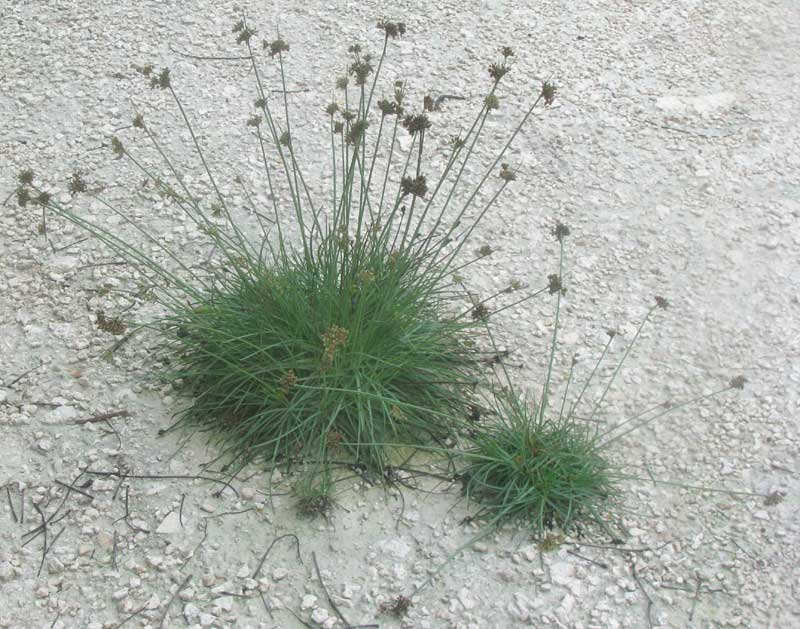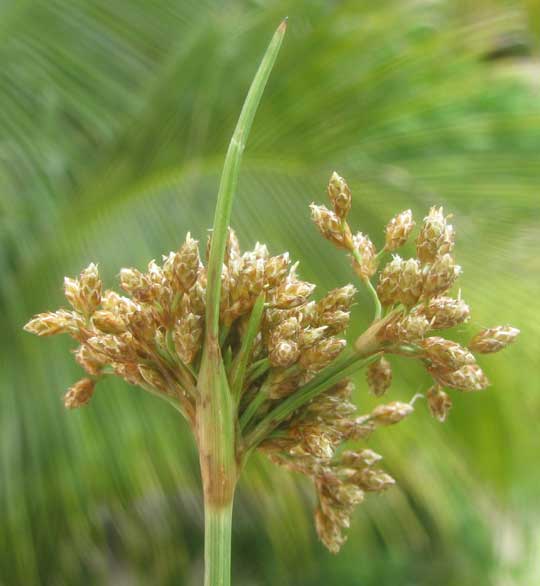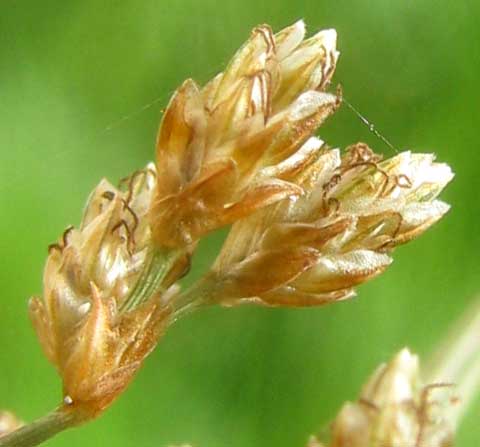Excerpts from Jim Conrad's
Naturalist Newsletter

from the October 23, 2011Newsletter issued from Mayan Beach Garden Inn 20 kms north of Mahahual; Caribbean coastal beach and mangroves, ~N18.89°, ~W87.64°, Quintana Roo state, MÉXICO
HURRICANE-GRASS
In the middle of a sandy trail leading through mangrove into a coastal lagoon a distinctive-looking, pincushion-like, grasslike plant turned up, as shown above. Its flower cluster, or inflorescence, is shown below:

Most inflorescences of this species do not have vertical, green " involucral bracts" rising above them as this one does. Usually such bracts are shorter than the inflorescences and thus hidden by them.
A close-up of the plant's individual spikelets is seen below:

The last picture shows three egg-shaped, or oval, spikelets, with each spikelet bearing maybe a dozen spirally arranged flowers, each flower subtended by and hidden by a pale brown scale. You can also see two slender, wormlike, dark brown items emerging from behind many scales. The wormlike things are pairs of styles arising atop each ovary. Pollen grains land on the styles, germinate, and send their male sex germs down through a pollen tube inside the styles to the ovary. Eventually the fertilized ovary matures into a hard, one-seeded fruit, an achene. Geese and ducks eat these achenes.
The plant in the middle of our road isn't a grass because grass flowers aren't arranged spirally into spikelets like this. Grasses are members of the Grass Family, the Poaceae, but this is completely different, a member of the Sedge Family, the Cyperaceae. One English name for this mostly tropical species is Hurricane-Grass and another is Tropical Fimbry. It's FIMBRISTYLIS CYMOSA, distributed from southern Florida and southern Mexico through Central America and the Caribbean into South America, plus Africa, Asia, Australia, and islands in the Indian and Pacific Ocean.
Since Hurricane-Grass occurs in Florida the species is described in the online Flora of North America. There its habitat is described as "Sands of sea beaches, brackish sandy open sites, often disturbed, commonly just in from mangrove or on sandy road shoulders."
That "just in from mangrove or on sandy road shoulders" couldn't have been more descriptive of where ours grew!